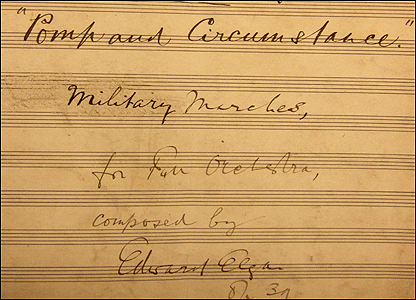 Graduation ceremonies are important part of our culture.
Graduation ceremonies are important part of our culture.
The graduation ceremony is a cultural tradition that is observed all around the world as a rite of passage from one stage in a student’s life to another. As the school year is coming to an end, graduation day looms closer and closer, and students wait with excited anticipation for this day that will mark a new phase in their lives. In this brief post we will discover the history of graduation day and the role that it plays in our culture.
 “Pomp and Circumstance,” composed by Sir Edward Elgar, is traditionally played at graduation ceremonies.
“Pomp and Circumstance,” composed by Sir Edward Elgar, is traditionally played at graduation ceremonies.
History states that the first graduation ceremony was held at Oxford University when the University passed a statute that required all graduating students to deliver a speech in Latin. Graduation ceremonies often begin with speeches from faculty or special speakers, and the piece “Pomp and Circumstance” is typically played after this speech while the student’s names are called. This piece was composed by Sir Edward Elgar (1857-1934) and was first performed on October 19, 1901 in England.
 Graduates wear caps and gowns on graduation day.
Graduates wear caps and gowns on graduation day.
The graduating students typically wear a cap and gown for the graduation ceremony. What we call a “cap” used to be called a “hood,” and history claims that Celtic groups were the first to implement this garb. During the Celtic period of history, only the Druid priests wore capes with hoods. This symbolized superiority and higher intelligence, and thus today the cap is worn to signify academic achievement. Before the 1950s graduation gowns were typically gray, but now various colors are used to represent school colors and different academic disciplines and departments.
 The tassel is always placed on the right and then moved to the left once the graduate receives his diploma.
The tassel is always placed on the right and then moved to the left once the graduate receives his diploma.
There are numerous other traditions associated with graduation ceremonies. The tassel is worn by all graduates and indicates an individual’s academic degree. The graduate wears the tassel on the right before receiving a diploma and then moves the tassel to the left upon receiving the diploma to signify the progress from one stage of life to the next. Additionally, the concept of the diploma is another tradition, and it originated from Islamic culture. Historical records show that the earliest degrees were written on sheepskin.
 Graduation ceremonies share similarities across borders, nations and ethnicities.
Graduation ceremonies share similarities across borders, nations and ethnicities.
Graduation ceremonies play an important role in our culture. From kindergarten graduations to graduating from the university, graduation ceremonies symbolize achievement, dedication and success. They are designed to inspire and congratulate, to encourage and challenge. They represent a rite of passage in our society from one stage of life to the next and bring people together to celebrate. Although small cultural differences may exist, graduation ceremonies are typically celebrated in a universal and uniform fashion regardless of race, culture or ethnicity. The similarity between graduation ceremonies all around the world show that individuals share more similarities that many realize. For regardless of our background, we all enjoy celebrating and commemorating rites of passage from one stage of life to another through graduation ceremonies.
To learn more about the history of the graduation ceremony, http://www.sfsu.edu/~oip/f1services/ActivitiesAndWorkshops/HistoryOfGraduationCeremoniesInWesternCulture.html or http://www.swinburne.edu.au/studentoperations/graduation/history-of-graduation.html.